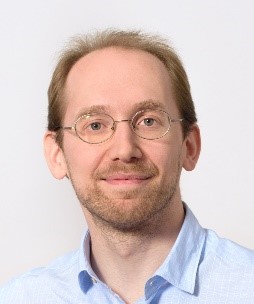Multiscale Simulation: From nano to macro – from models to devices
→ Download the presentations now ←
The design and development of nano- and microdevices go together with accurate computer models of materials, properties, and functions. Simulations need to be multiscale, accurate over a range of length scales, and must take into account the appropriate physics at each scale. As new materials and new functions come into play in micro- and nanoengineering, multiscale simulation methods are essential for fast progress in the near future. Novel functionalities, novel physical aspects can be incorporated into multiphysics models that treat the variety of physical phenomena acting at the same time. With decreasing feature sizes, device modelling becomes more and more interwoven with material modelling. For the accurate prediction of function and performance of nano- and micro devices we need to solve problems where multiple time and length scales are coupled.
By its very nature, multiscale simulation is interdisciplinary. Simulation strategies for novel nano- and micro-scale based devices and circuits must combine methods spanning a wide range of disciplines including chemistry, material sciences, physics and engineering. The short courses bring together experts from different fields who will show how multiscale modelling approach contribute to device design in nano- and microelectronics, magnetic sensors, nanofabrication, and polymer based systems.
Program
The short courses will be held in the Business Suites on the first floor of the Congress Center.

12:30 – 13:30 |
Semiconductor device modeling at the nanoscale Hans Kosina Institute for Microelectronics, TU Wien, Austria Predictive models of nano-electronic devices have to address two major aspects: Electronic structure and electronic transport. The continued introduction of new materials in semiconductor technology and the advent of strain engineering require suitable approaches to band structure modeling. At the characteristic length scales of nano-structures, tight-binding and k*p models are well suited. Examples of band structure engineering will be shown. A model for electronic transport through these structures has to account for quantum interference effects, tunneling, and dissipative scattering. We shall discuss the issues of quantum transport modeling and present typical nano-electronic and opto-electronic applications. |

13:30 – 14:30 |
Multiscale simulations for magnetic devices: From hard disk drives to magnetic sensors Dieter Suess Institute of Solid State Physics, TU-Wien, Austria We will present multiscale magnetic simulation for the design of magnetic devices. We start from atomistic simulations in order to extract magnetic input parameters for micromagnetic simulations, which can describe magnetic phenomena at significant larger length scale, such as the writing of magnetic bits in a hard disk. These simulations are again coupled to a larger length scale – macroscopic Maxwell equations – in order to describe macroscopic parts of a hard disk such as magnetic shields. The presented simulations are illustrated with real world application, where we could predict new structures and devices, such as hard disks with significant higher storage density and sensors with lower noise. |
| B R E A K | |

15:00 – 16:00 |
Coarse-grained simulations of soft matter in microfluidic devices Jens Smiatek Institute for Computational Physics, University of Stuttgart, Germany Microfluidic devices have a broad applicability in modern biotechnology. Most occurring phenomena can be explained by a combination of hydrodynamics, electrostatics and soft matter physics. In this short course, I will discuss particle-based approaches for the coarse-grained simulation of soft matter in microchannels. After a basic introduction into Dissipative Particle Dynamics and the coupled Lattice-Boltzmann/Molecular Dynamics method and the discussion of some potential pitfalls, I will present recent simulation results of electrokinetic effects and the separation of chiral molecules in asymmetric pressure-driven flows. |

16:00 – 16:30 |
Computational fabrication of structural color Thomas Auzinger Bickel Group, Institute of Science and Technology, Austria With the advent of 3D stereolithography, free-form fabrication became feasible in the nano- to micrometer range. This allows the convenient creation of microstructures that interfere with visible light to produce pigmentless color; an effect that can be accurately modeled with electromagnetic simulation. In this short course, we address the inverse problem in this context: Given user-specified color of a surface, which microstructure – when fabricated – would realize it? Formulated as a computational optimization problem, we present:
|

16:30 – 17:00 |
Two-photon polymerization in 3D printing sets new standards in micro and nanofabrication Alexander Legant Nanoscribe GmbH, Eggenstein-Leopoldshafen, Germany The benefits of 3D printing have now fully arrived on the micrometer scale. Two-photon polymerization has sped up more than 100-fold within the last two years while preserving its accuracy and resolution. Substantial progress in hardware, software, materials, and related processes have additionally opened a new dimension: While previously known for ultra-fine yet small objects mostly viewed under the scanning electron microscope, now mm³-scale fabrication has become the novel standard in 3D microfabrication with still sub-micrometer features. A simple workflow including the use of STL data as standard secures a rapid transformation of virtual models into physical objects. This closes the gap to conventional stereolithography formerly considered as highest resolution 3D printing technique. |
| 17:00 | W E L C O M E R E C E P T I O N |









